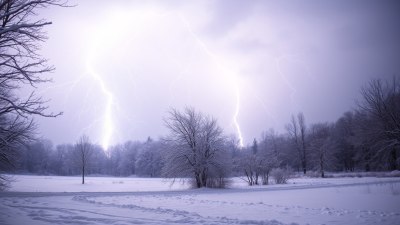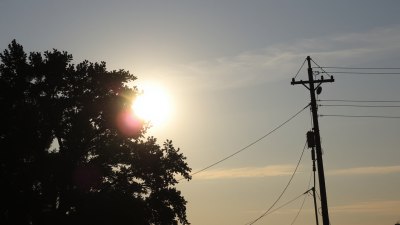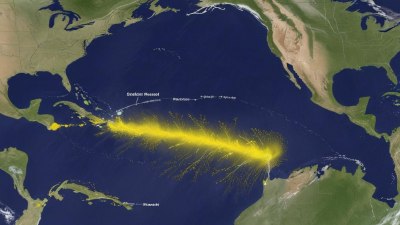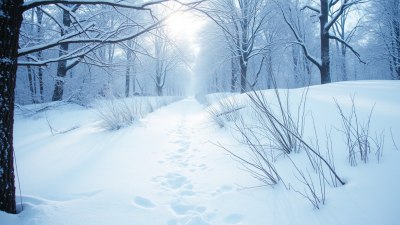Why the Andes Mountains Have More Climate Zones Than Most Countries
Explore the diverse climate zones of the Andes Mountains and their unique ecological significance.
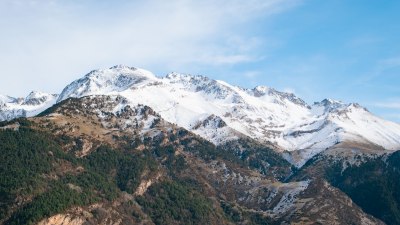
The Andes Mountains, stretching along the western edge of South America, are not just the longest mountain range in the world; they also host an incredible variation of climate zones that surpasses many countries. This complexity arises from numerous geographical and environmental factors that influence climate, making the Andes a fascinating study in biodiversity and ecological diversity.
One of the primary reasons the Andes mountains have such a variety of climate zones is their sheer length and altitude. Stretching over 7,000 kilometers (more than 4,300 miles) through seven countries, including Argentina, Bolivia, Chile, Colombia, Ecuador, Peru, and Venezuela, the Andes present a unique topography that captures different climatic conditions. The elevation of the Andes varies greatly, with some peaks towering over 6,900 meters (22,600 feet) above sea level, leading to significant temperature fluctuations and climatic differences.
Altitude and its Impact on Climate
Altitude is a crucial factor in determining climate. As one ascends the Andes, the temperature generally decreases. For every 1,000 meters (about 3,280 feet) increase in elevation, the temperature can drop by approximately 6.5°C (about 11.7°F). This temperature gradient leads to distinct climate zones, ranging from tropical at lower altitudes to polar conditions at the highest peaks. The variation encompasses several climate classifications, including tropical rainforests, dry deserts, temperate regions, and alpine tundra.
Topographical Influence on Weather Patterns
The Andes also play a significant role in influencing local weather patterns. The mountains act as a barrier to moist air coming from the Pacific Ocean. When the moist air encounters the Andes, it rises and cools, leading to precipitation on the windward side, creating lush, green landscapes. Conversely, the leeward side can experience rain shadow effects, resulting in arid deserts. For example, the western slopes of the Andes in Chile receive heavy rainfall, while the Atacama Desert, located just east of the mountains, is one of the driest places on earth.
Microclimates Within the Andes
In addition to the broad climate zones, the Andes are known for their microclimates. Variations in vegetation, soil, and local geography result in localized climates that can differ significantly over short distances. For instance, areas with abundant vegetation may experience cooler temperatures and higher humidity than nearby barren hillsides. This patchwork of microclimates supports a rich diversity of flora and fauna, making the region a hotspot for biodiversity.
Flora and Fauna Diversity
The climatic diversity of the Andes contributes to its rich biodiversity. The lower elevations are home to tropical rainforests, which host a myriad of plant species, birds, and mammals. As one ascends, the ecosystem transitions into montane forests, characterized by a range of coniferous and deciduous trees. Higher up, the vegetation shifts again to alpine meadows and tundra. This vertical stratification allows for a variety of ecosystems to coexist, making the Andes one of the most biodiverse regions on the planet.
Human Impact on Andes Climate Zones
Human activity has also impacted the climate zones of the Andes. Agriculture, urban expansion, and deforestation have altered local climates and reduced biodiversity. Traditionally, indigenous communities have lived sustainably in these mountains, utilizing their natural resources while maintaining ecological balance. However, modern agricultural practices and logging have introduced stressors that threaten these unique ecosystems. Climate change further exacerbates these challenges, leading to shifting weather patterns and increased vulnerability for many species.
The Role of Climate Change
Climate change is an increasingly important factor affecting the Andes. Rising global temperatures have led to glacier retreat, impacting water supplies for millions of people who rely on meltwater for drinking and irrigation. Altered precipitation patterns can lead to both increased flooding and prolonged droughts, challenging agricultural practices and threatening food security for local populations. The climatic impacts of climate change in the Andes emphasize the need for focused conservation efforts and sustainable development strategies.
Preserving the Diverse Ecosystems
Conservation efforts are crucial for protecting the diverse ecosystems found in the Andes. Several organizations and local governments are working to establish protected areas, promote sustainable land-use practices, and involve local communities in conservation efforts. Education and raising awareness about the importance of preserving these unique climate zones are vital for fostering stewardship of the environment. Sustainable tourism initiatives also offer opportunities that highlight the Andes’ natural heritage while supporting local economies.
The Andes Mountains stand as a testament to nature’s complexity, offering more climate zones than most countries due to variations in altitude, geography, and climate influences. The ecological richness found within the Andes is matched by the diversity of cultures that have adapted to these landscapes. Understanding and protecting this diverse environment is essential, especially in the face of climate change and human impact.
Efforts to study and conserve the Andes’ unique climate zones can provide valuable insights into global biodiversity and highlight the importance of sustainable environmental practices. By recognizing the intricate connection between geography and climate, we can better appreciate the Andes' significance as an ecological treasure that must be preserved for future generations.



